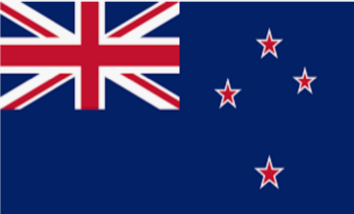
Pandemic Preparedness
“What have we learned from the COVID-19 Pandemic?”
This was the question addressed by the Health Workshop of our UN 75th Anniversary Online Festival. For a general introduction to this question, listen to the break-out session on Pandemic Preparedness. Or
listen to the recordings of the Keynote address by Professor David Hayman (02:00 minutes to 09:33), and the opening statement by Dame Sally Davis (09:40 to 15:02).
Following reflection / discussion of the ideas offered by Hayman and Davis, the Workshop offered the following answers to the Question: What have we learned from the COVID-19 Pandemic:
- Encourage solutions from the bottom-up – as well as from the top down;
- Know our human rights in relation to healthcare and voice our priorities to decision-makers;
- Think long-term and recognise the needs of diverse populations: minorities have suffered excessively in this COVID pandemic;
- Share solutions to problems and best practice between nations and between local communities (such as Zimbabwe friendship benches to address Mental Health issues)
- Use digital tech to support & compliment, rather than replace existing healthcare services;
Unlike the TPNW MCA, this is not a question with a YES / NO answer. So in choosing, or training up, your expert witnesses, we suggest that you cast your learning net as widely as possible so that the Jury – and the audience – can up-vote and thus prioritise major policy recommendations which they can then all advocate for in the follow-up stage. For the question we’re all seeking to answer is: How do we better prepare for the next Pandemic?? – which might be so much worse than COVID-19. There are many ways to frame the question – but the essential evidence for an informed discussion of the issue is to compare and contrast the strategies of those countries that emerged successfully and quickly from the pandemic with those pursued by countries that performed worst.

Taiwan (751 cases, 7 deaths) – Before coronavirus was even registered by other governments, Taiwan was testing and quarantining travellers from Wuhan, China. The island’s proximity to China enabled it to act early – deploying a containment strategy that has proven to be one of the most successful in the world. If a citizen tests positive, they are provided with a quarantine hotel and cab. After the outbreak of SARS in 2003, Taiwan strengthened its preparations for pandemics, setting up an infectious disease prevention network, holding annual drills in hospitals and building up a stockpile of face masks, medical officers, and lab capacity. By October 2020, it had gone 200 days without any cases of COVID-19. Then, 24 cases came from people traveling from Indonesia. So the government conducted coronavirus testing on all Indonesian migrant workers in quarantine centres and the outbreak was contained.

New Zealand (2,151 cases, 25 deaths) – New Zealand wasted no time in preventing the spread of Covid-19: travel restrictions to and from other countries were imposed in February 2020. Rather than just ‘flattening the curve’, New Zealand took a more aggressive ‘disease elimination’ approach, entering a full national lockdown on 26 March. Nine months on, the country is still swift to respond to cases: after just one student became infected with COVID-19, health authorities partially shut down Central Auckland, asking workers in the city to stay home.

Iceland (5,276 cases, 28 deaths) – Iceland’s success is partly down to early vigilance and action: health officials rushed in to contain the spread, while the government quickly built a team of contact tracers. As a result, the country has not faced a large-scale lockdown. Another reason why Iceland has been successful is because people actually stayed indoors while the government covered the individual’s full salary. After opening its borders in the summer, Iceland spiked from one to 55 cases in a week. To combat the spike, the government introduced quarantine procedures, as well as fresh restrictions and an emphasis on mask-wearing after which, the number of active infections began to decline.

Singapore (58,529 cases, 29 deaths) – Singapore’s small population (5.7 million) and the experience of SARS in 2003 + aggressive testing and tracing of carriers helped limit the impact of Covid.The government tightened border controls immediately after the disease first erupted and provided a clear communication strategy. Despite having high case numbers, many of Singapore’s new cases are younger people which kept the death rate low. The government requires pupils aged 7+ must use the country’s wearable contact-tracing app to combat the transmission of COVID-19 to older family members.

Vietnam (1,451 cases, 35 deaths) – When the first coronavirus case was confirmed in Vietnam on 23 January, its emergency plan was immediately put into action – months before other countries took any precautions. They increased health checks at all borders and closed the border with China. Schools closed from January until mid-May. A vast contact-tracing operation started immediately. “When you’re dealing with these kinds of unknown novel, potentially dangerous pathogens, it’s better to overreact,” says Dr Todd Pollack of Harvard’s Partnership for Health Advancement in Hanoi. Unlike other countries now seeing infections on a huge scale, Vietnam saw a small window to act early and made it count. When an outbreak in the historic port city of Danang led to over 450 cases in just one weekend, the government flew home 80,000 visitors immediately, and put the city into full lockdown.
Five countries that handled coronavirus badly:

USA (19.58 million cases, 341,196 deaths) – President Donald Trump’s ignorance and refusal to act fast has given his country the highest number of cases and deaths from the pandemic. He turned a blind eye to much of the World Health Organisation’s advice, promoted hydroxychloroquine as a cure for the virus, despite research showing it is likely to be ineffective, refused to wear a face mask and suggested that injecting disinfectant could cure the illness. Trump complains that better testing in the US leads to higher numbers but, with nearly 60,000 cases per million of population – it has the highest % infection rate as well as the highest total number of cases and deaths in the world. India, by contrast, only has 7,369 cases per million. In February, at a White House briefing, Trump said: “It’s going to disappear. One day, it’s like a miracle, it will disappear.” Sadly, Trump’s wishful thinking has not served the US people well.

Brazil (7.484 million cases, 191,146 deaths) – Despite claiming one of the highest death tolls in the world, there’s still not been a national lockdown in Brazil. States and cities adopted their own measures, but President Jair Bolsonaro joined anti-lockdown protests in the capital, repeatedly playing down the risks of this “little flu”. Medical advice was ignored causing one health minister to resign, another to be sacked. Contact tracing was never done. Poor Brazilians who don’t have health insurance thus form a huge majority of Brazil’s Covid-19 sufferers. Pressure was put on local coroners not to put “coronavirus” on death certificates to minimise numbers and many families, disturbed by Covid, were happy to oblige. Like everywhere else, vaccines represent a sign of hope – but President Jair Bolsonaro has hugely undermined their significance by tweeting he would only use it on his dog.

India (10.22 million cases, 148,051 deaths) – India responded quickly to COVID-19 – implementing surveillance as early as January 17 and enforcing a strict lockdown from 24th March to 31st May. However, the sudden lockdown impacted millions of low-income migrant workers, who with no financial help from the government, faced hunger and illness – with many having to walk hundreds of miles to reach their villages. Rations for migrants were finally implemented more than 45 days after lockdown. GP services and hospitals were not equipped to deal with the outbreak, resulting in many people being turned away. Testing was scarce with India was testing around 4,100 people per million – compared with a global average of over 29,000. While well-funded countries like the USA and UK wasted billions on faulty track and trace systems, India did its best but was let down by lack of funding and ill-equipped hospitals.

Mexico (1.383 million cases, 122,426 deaths) – Mexico’s President Obrador was slow to act and his decision not to close borders or exercise caution at airports played a key role in the spread of the virus. Obrador claimed: “Mexico’s spirituality would protect the country against the virus.” He made a public display of pulling out two religious amulets that he said would be his shield. In mid-March, he urged people to “keep living life as usual, taking your family out to eat because that strengthens the economy.” 40,000 concert goers attended a popular music festival and tourists from Europe and the USA were able to enter the country without restrictions. When lockdown was introduced on 30th March, rules weren’t clear: tourists weren’t allowed in, but people could cross the border to go to work and/or school. Conditions in migrant camps were even worse with hundreds of migrants huddled together in insanitary conditions. In response to the Mexican leaders’ cynicism toward mask-wearing, the leader of the WHO said: “We’d like to ask Mexico to be very serious: wearing a mask is important. Hygiene is important. Physical distancing is important. We expect leaders to be examples.” Obrador, like Trump, wasn’t..

United Kingdom (2.228 cases, 70,752 deaths) – The UK’s high death toll is the result of a dangerously late lockdown, and a floundering administration. Five weeks after the first Covid-19 case was confirmed, the Prime Minister announced: “It’s very important that people should, as far as possible, go about business as usual.” It wasn’t until 285 people had died that Johnson decided to lock down the country and he didn’t impose travel restrictions in and out of the country until June! Worse, Ministers allowed 25,060 patients to be discharged from NHS hospitals to care homes without being tested for Covid-19. They abandoned contact tracing at the height of the pandemic in March and failed to provide adequate protective equipment for front-line workers. According to several experts, their ‘Eat Out to Help Out’ scheme triggered the country’s second wave, which has seen more cases than the first. The UK government’s plan appears to be: lock down the country every few months and hope for the best.
Of course, many other countries can be said to have performed at least as badly, if not worse, than the above countries: Sweden, Switzerland, Slovenia, Qatar and many others have higher incidences of cases per million population than the UK(see HERE). The above examples are offered only to help you start your investigation into what works, and what does NOT work, to improve pandemic preparedness.
The UN / World Health Organisation’s Take on Pandemic Preparedness: The UN’s 75th Anniversary Declaration admits: “The COVID-19 pandemic caught us off-guard.” It argues that it should – “…serve as a wake-up call for improving our preparedness for health-related crises, strengthen international cooperation and accelerate the development, production as well as equitable and affordable global access to new vaccines, medicines, and medical equipment.” Hans Rosling pleads that pandemics, more than any other, require a “strong, well-functioning international community (I mean the UN!)” The UN World Health Organisation asks: “Can we create a pandemic-free world? There’s no guarantee, but with meticulous preparation and rapid response, we can prevent most outbreaks from getting out of control. First, we must build and sustain resilient capacities at national, regional and global levels to prevent, detect and respond to outbreaks. Second, we must ensure that populations affected by emergencies have rapid access to life-saving health services, including medicines and vaccines. That’s why WHO works all around the world to strengthen people-centred primary health care and disease prevention. Delivering this will cost money of course, but in the end, prevention is not only better than cure: it’s cheaper.”
